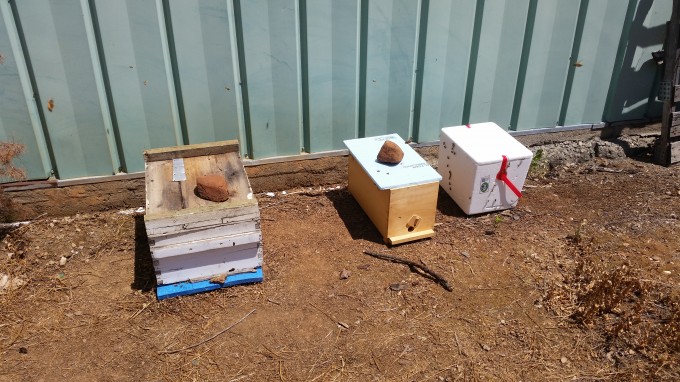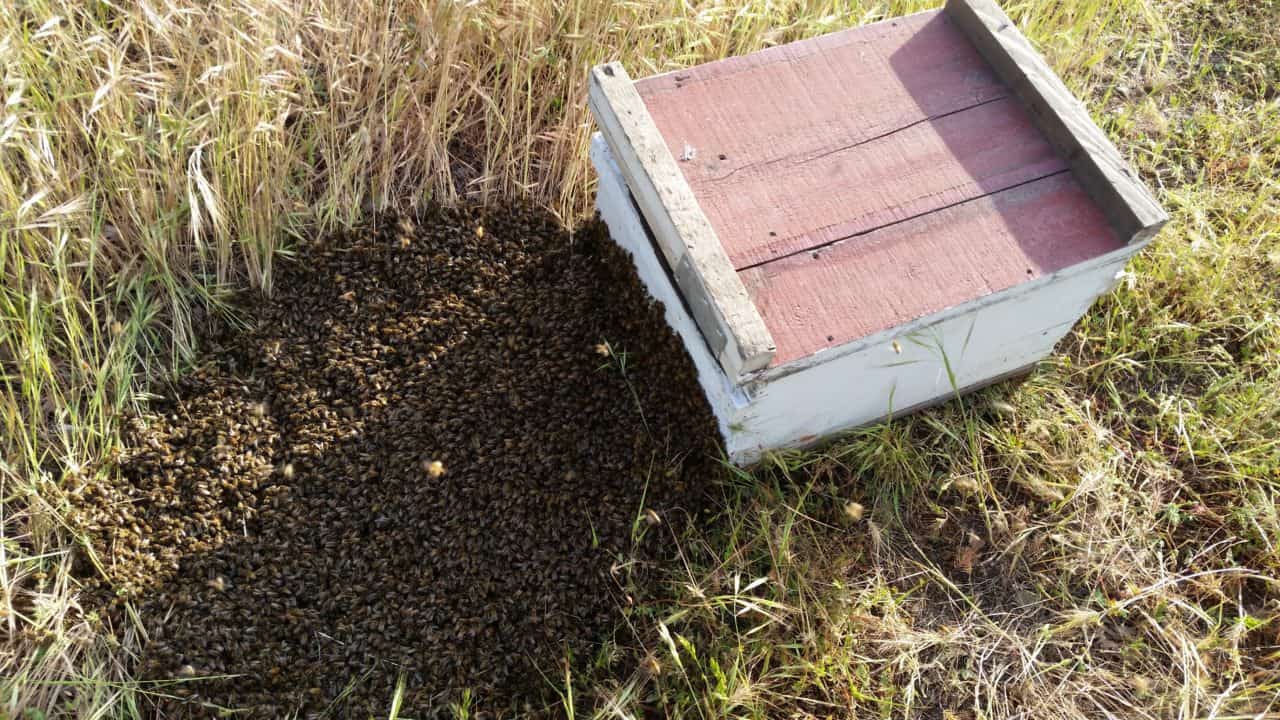Spring has always been my favorite time of year – it seems that all living things are bursting forth with enthusiasm, and bees are no exception! Despite the huge variation in local climates and weather patterns, beekeepers in every region experience a swarm season, when the bees receive cues from nature that it is time to reproduce. Increased day length, warmer temperatures, increased food sources and lack of space are all responsible for encouraging bees to swarm. Other causes of swarming include poor ventilation, mite infestation or disease, and old/failing queens. Here in Northern California it feels like spring begins in January (sorry midwesterners don’t mean to rub it in!) and by the end of May the valley is dried out and golden brown. So although we are near the end of swarm season, other regions are still in the thick of it. 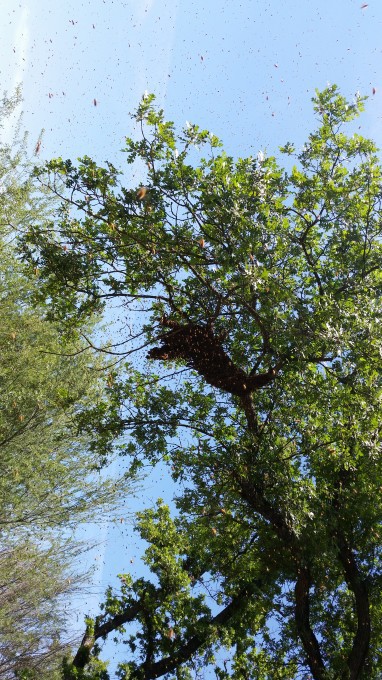
Swarms are fascinating to watch, and in my opinion capturing one is one of the most gratifying experiences of beekeeping. However, most large commercial beekeepers will not bother with catching swarms unless they are in a very accessible spot within the apiary. Oftentimes it is not worth the time and effort to chase down a swarm, so they focus on management techniques that reduce swarming.
One could easily write a book about swarm prevention methods, but there are a few strategies that are more or less effective. Nothing works 100% of the time, and once a colony is set on swarming there may be nothing that will change their minds. The most important thing that can be done is providing extra space, both in the brood nest and in the form of honey supers. If the brood nest is totally filled and is being clogged with honey and pollen coming in, some of these framed can be swapped with empty frames which keeps the workers busy drawing out comb and gives the queen a place to lay. Also, making splits early and keeping on top of basic hive maintenance such as mite control and providing adequate ventilation can go a long way in reducing swarming.
Because of the high density of beekeepers in the northern Sacramento Valley, swarms are a very common sight around Chico. The NorCal Bee Team has been at the right place at the right time on a few occasions and we have been able to capture a couple of swarms in makeshift boxes. The first swarm we came upon was on the ground in the middle of a grassy field. This is not unheard of, but most swarms prefer to settle at chest height or higher, keeping them away from skunks and other animals. The best container for capturing a swarm is a brood box, preferably with a frame of brood already inside. The bees are drawn in because their instincts make it hard for them to ignore unattended brood.
We had an old brood box and a couple of bottom boards handy, so we stapled them together for a temporary swarm catching container. The tall grass made it impossible to scoop up the bees, so we placed the box next to the clump and waited for them to enter, keeping an eye out for the queen. We knew she wasn’t in the hive after half the bees entered then stopped going in. Because it was getting dark we felt like they needed some encouragement, so we smoked the cluster a little which drove the rest into the hive. Later we discovered that there was never a queen in this swarm, our guess is that she was picked off by a bird in mid-flight and the rest of the swarm just dropped to the ground without her pheromones to lead the way. We introduced a new queen and the hive is growing and doing well.

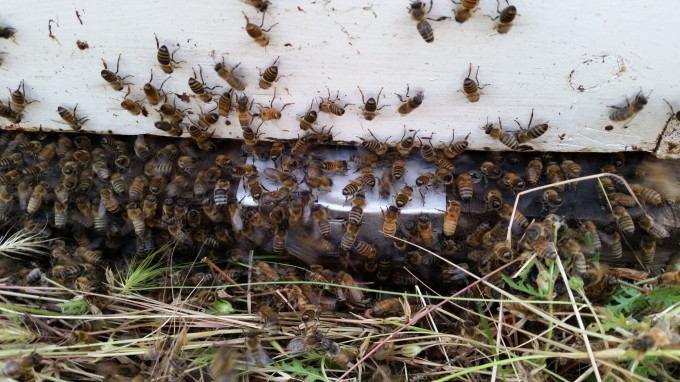
It is always nice when a swarm is situated in an accessible spot such as a low hanging branch, but often the bees will pick inconvenient spots to settle on. During a recent apiary visit in the hills of the north Bay area, we came across a swarm on a fence post, probably because there were no trees in the vicinity. In these cases it is impossible to shake the bees off and difficult to find the queen, so the best method is to put an empty box as close as possible to the swarm in hopes that they will find it and crawl in on their own. Sometimes this is easier said than done, depending on what materials are on hand. A step ladder comes in handy for elevating the bait hive to the level of the swarm, but often some improvisation is required.
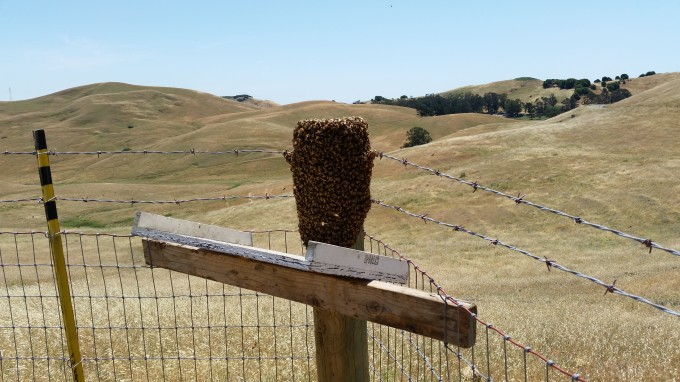
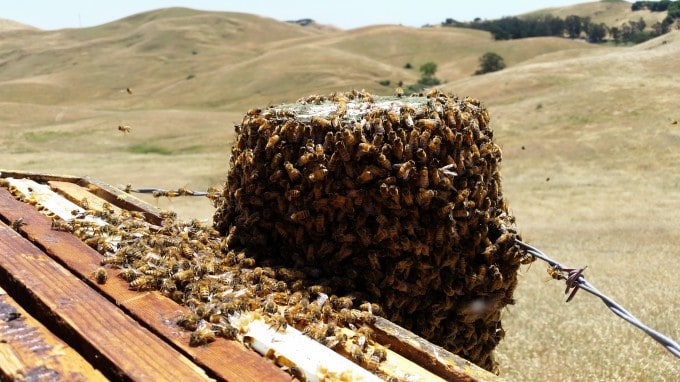
Although the springtime is the most likely time of year to find a swarm, they can occur at any time so be on the lookout. Many County Cooperative Extension offices have swarm catching lists that you can request to be added to, if you have time and energy to chase down swarms of course! People will often call in wasp nests and the like, so it’s always good to ask the right questions before showing up. It’s also a good idea to ask how high the swarm is, sometimes they are just impossible to get to without a cherry picker or some extreme climbing skills. However, as in the situations above, sometimes it is as easy as putting an empty box by the swarm and letting them catch themselves!
